
The Technical University of Nova Scotia (TUNS) was a Canadian university located in Halifax, Nova Scotia.
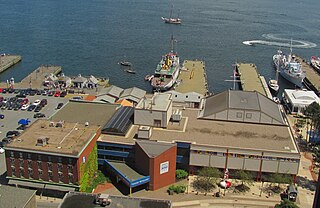
The Maritime Museum of the Atlantic is a maritime museum located in downtown Halifax, Nova Scotia, Canada.
Canadian Forces Station Debert was a Canadian Forces station located in Debert, Nova Scotia. It was most recently used during the Cold War as a communications facility and was home to a "Regional Emergency Government Headquarters" (REGH) complex, more commonly known by their nickname "Diefenbunker."
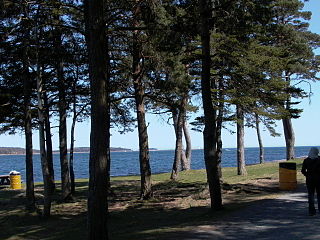
Point Pleasant Park is a large, mainly forested municipal park at the southern tip of the Halifax peninsula. It once hosted several artillery batteries, and still contains the Prince of Wales Tower - the oldest Martello tower in North America (1796). The park is a popular recreational spot for Haligonians, as it hosts forest walks and affords views across the harbour and out toward the Atlantic.

Canadian Forces Base (CFB) Halifax is Canada's east coast naval base and home port to the Royal Canadian Navy Atlantic fleet, known as Canadian Fleet Atlantic (CANFLTLANT), that forms part of the formation Maritime Forces Atlantic (MARLANT).

Fort Anne is a four-bastion fort built to protect the harbour of Annapolis Royal, Nova Scotia. The fort repelled all French attacks during the early stages of King George's War.

King's-Edgehill School is a Canadian private university-preparatory boarding and day school located in the town of Windsor, Nova Scotia. It is the oldest English independent school in the Commonwealth outside the United Kingdom, founded by United Empire Loyalists as King's Collegiate School in 1788, and granted Royal Charter by King George III in 1802.
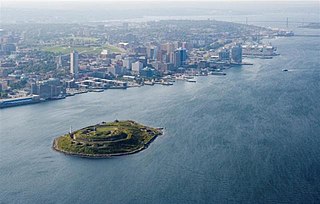
Georges Island is a glacial drumlin and the largest island entirely within the harbour limits of Halifax Harbour located in Nova Scotia's Halifax Regional Municipality. The Island is the location of Fort Charlotte - named after King George's wife Charlotte. Fort Charlotte was built during Father Le Loutre's War, a year after Citadel Hill. The island is now a National Historic Site of Canada. As of August 6, 2020, the island is open to the public on the weekends, from June until Thanksgiving weekend.

McNabs Island is the largest island in Halifax Harbour located in Halifax Regional Municipality, Nova Scotia, Canada. It played a major role in defending Halifax Harbour and is now a provincial park. The island was settled by Britons in the 1750s and later by Peter McNab, and McNab family members lived on the island until 1934.
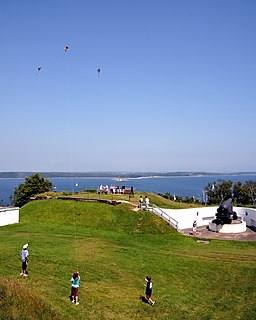
York Redoubt is a redoubt situated on a bluff overlooking the entrance to Halifax Harbour at Ferguson's Cove, Nova Scotia, Canada, originally constructed in 1793. It was designated a National Historic Site of Canada in 1962.

The Halifax Court House is a historic building in downtown Halifax, Nova Scotia. Its main section was completed in 1863, with the east wing, built in 1930, being the newest portion. The Italian renaissance style building was designed by William Thomas, a Toronto architect who created prominent structures across Canada, and built by George Lang.

The Halifax Armoury is a military structure in central Halifax, Nova Scotia, Canada. The armoury is the home base of The Princess Louise Fusiliers, and several cadet units.

Halifax Public Libraries (HPL) is a Canadian public library system serving residents of Halifax, Nova Scotia. It is the largest public library system in Nova Scotia, with over 2.8 million visits to library branches and 172,520 active registered borrowers or 44% of the municipality's population. With roots that trace back to the establishment of the Citizens' Free Library in 1864, the current library system was created in 1996 during municipal amalgamation, and now consists of 14 branches and a collection of almost 1 million items.
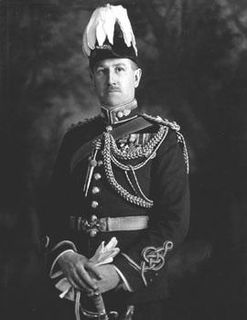
Major General William Henry Pferinger Elkins, was a Canadian soldier. He was a commandant of the RMC.

The Naval Museum of Halifax is a Canadian Forces museum located at CFB Halifax in the former official residence of the Commander-in-Chief of the North America Station (1819–1905). Also known as the "Admiralty House", the residence is a National Historic Site of Canada located in Halifax, Nova Scotia, Canada. The museum collects, preserves and displays the artifacts and history of the Royal Canadian Navy.

The Grand Parade is an historic military parade square dating from the founding of Halifax in 1749. At the north end of the Grand Parade is the Halifax City Hall, the seat of municipal government in Nova Scotia's Halifax Regional Municipality. At the south end is St. Paul's Church. In the middle of Grand Parade is the cenotaph built originally to commemorate the soldiers who served in World War I.
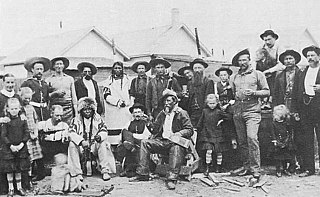
The Halifax Provisional Battalion was a military unit from Nova Scotia, Canada, which was sent to fight in the North-West Rebellion in 1885. The battalion was under command of Lieutenant-Colonel James J. Bremner and consisted of 350 soldiers made up three companies from the Princess Louise Fusiliers, three companies of the 63rd Halifax Rifles, and two companies of the 1st "Halifax" Brigade of Garrison Artillery, with 32 officers. The battalion left Halifax under orders for the North-West on Saturday, 11 April 1885 and they stayed for almost three months.
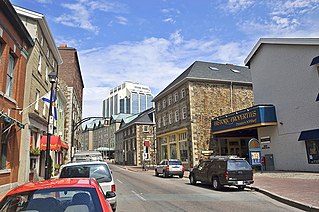
The Historic Properties are warehouses on the Halifax Boardwalk in Halifax, Nova Scotia that began to be constructed during the Napoleonic Wars by Nova Scotian businessmen such as Enos Collins, a privateer, smuggler and shipper whose vessels defied Napoleon's blockade to bring American supplies to the British commander Duke of Wellington. These properties helped make Halifax prosperous in Canada's early days by aiding trade and commerce, but they were also frequently used as vehicles for smuggling and privateering. During the War of 1812, two of the most successful Nova Scotian privateer ships during this time period were the Liverpool Packet and the Sir John Sherbrooke.

The Prince of Wales Tower is the oldest martello tower in North America and is located in Point Pleasant Park, Halifax Regional Municipality, Nova Scotia, Canada. It was built in 1796 by Captain James Straton and was used as a redoubt and a powder magazine. Restored, it was designated a National Historic Site of Canada in 1943.

Cambridge Military Library is a public library building in Royal Artillery Park in Halifax, Nova Scotia, Canada which was created in 1886. The building was created to house the garrison library collection, which had been moved from various locations in the city since its creation in 1817. It is the oldest library collection in Atlantic Canada. This building was the social and literary centre of military Halifax. In 1902, the officers of the garrison requested the library be named after the Prince George, Duke of Cambridge.






















